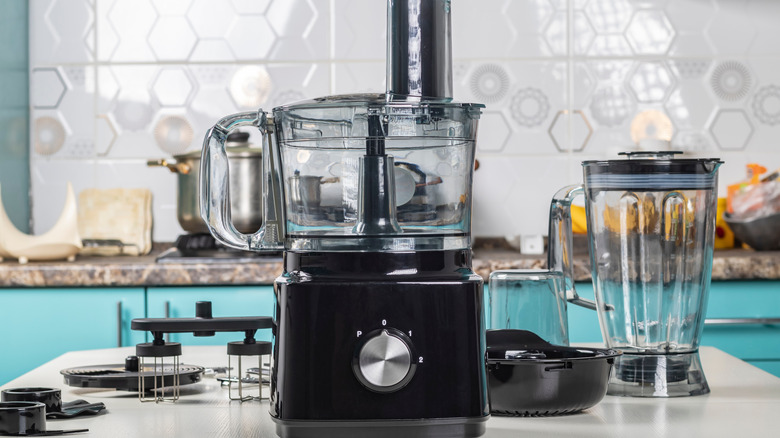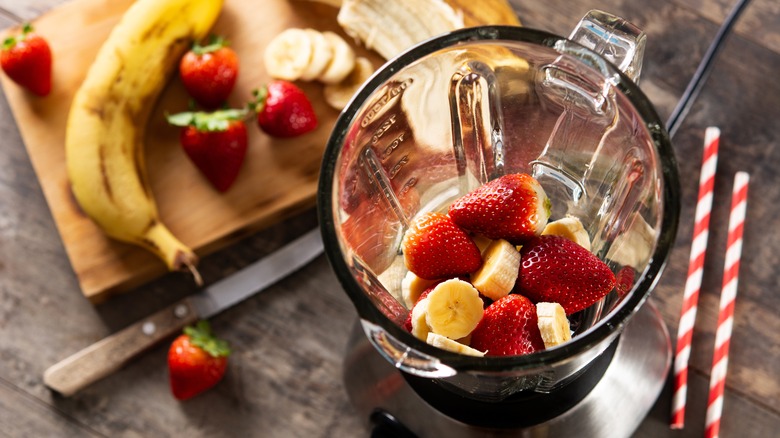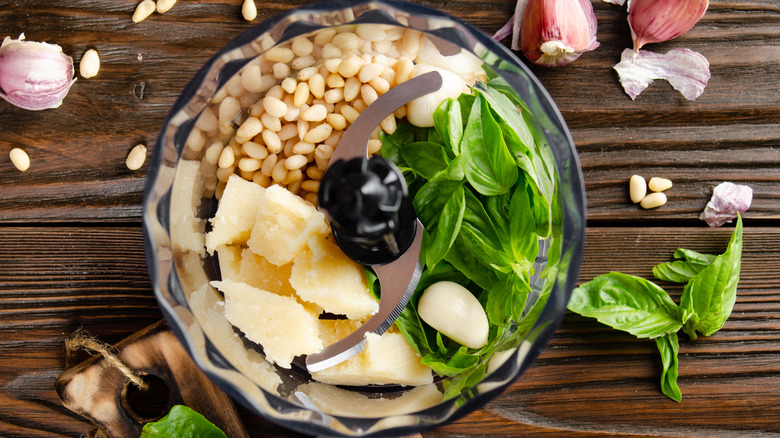When To Use A Blender Vs. A Food Processor
If you enjoy cooking, then it's likely that you're using your kitchen every day for prepping, cooking, and eating. Thus, having plenty of counter and cabinet space is essential. It's also nice to have an extra hand to help, which is where kitchen appliances come in. From microwaves and rice cookers to blenders and food processors, there are many devices to consider placing in that precious kitchen real estate. Sometimes, it's worth evaluating whether or not you actually need a particular appliance in order to maximize your kitchen's storage and prep areas.
At first glance, a blender and a food processor may seem identical; they break down large ingredients into tiny pieces with their blades. Although they may work similarly, a blender differs significantly from a food processor. By design, blenders and food processors have distinct purposes, per KitchenAid. When it comes to cooking, knowing which gadget is best suited for the task can help your time in the kitchen go a little smoother.
When to use a blender
At its simplest, a blender is used for pureeing, crushing ice, or concocting a drink, according to KitchenAid. A blender typically has one blade and is designed to blend wet ingredients. Many blenders are tall, which helps evenly blend and circulate ingredients. Therefore, a blender is preferable when making puddings, soups, and sauces.
Food editor and TV host Alyse Whitney recommends using a blender to puree vegetables, make vinaigrettes, and even crêpe batters (via Epicurious). For recipe developer and food editor Christine Gallary, a blender is the perfect tool to create hollandaise and frozen cocktails. If you're feeling adventurous and want to make your own nut flour or butter, KitchenAid suggests using a blender to grind down your nuts of choice.
There are limits when it comes to using a blender, per The Washington Post. Don't try to jam ingredients in the blender; instead, fill it up to three-quarters full. Be careful when filling it with hot liquid, as the cap can come loose when blending. Wait for the liquid to cool down, and cover the blender with a towel instead of its lid when blending.
When to use a food processor
Looking to slice, shred, or chop some ingredients? That's where food processors come in handy, per KitchenAid. Food processors are able to do all of that, as well as mix and knead, thanks to its multiple discs and blades.
A food processor's wide bowl size allows it to chop and shred larger ingredients without needing to add liquid, such as vegetables. Not only can it shred and chop veggies, but a food processor can also mince meat. According to America's Test Kitchen Kids, food processors have two basic functions, pulsing and processing. Pulsing is best for chopping and mincing, while processing is best for mixing and pureeing.
Private chef and recipe developer Sara Tane says to use a food processor when making dry mixtures, such as a "chunky dip, spread, or dressing" (via Epicurious). If you're looking for some recipes, Tane recommends using a food processor to make pie dough or cauliflower rice. Food processors also are equipped to make pesto, pate, and salsas.


